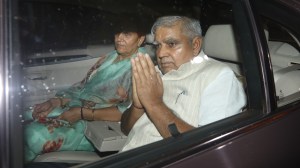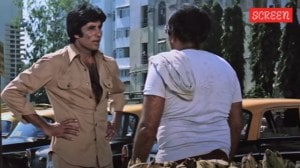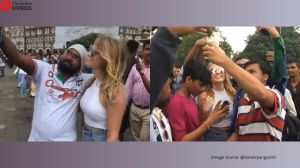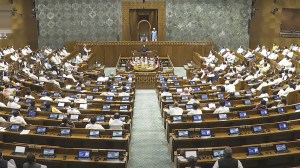Delhi Rewind: How C R Park was almost named Purbachal — till Indira Gandhi govt intervened
In order to make a democratic choice of name, the EPDP association called for a referendum and put ‘Purbachal’ and ‘Chittaranjan Das’ to vote. Bandopadhyay recalled how Purbachal won the popular vote. However, it was not the name the neighbourhood eventually got, on account of the political interventions of the Indira Gandhi government.
 C R Park was at that time officially known as East Pakistan Displaced Persons Colony (EPDP Colony). (Amit Mehra)
C R Park was at that time officially known as East Pakistan Displaced Persons Colony (EPDP Colony). (Amit Mehra)Sreemati Chakraborti (69) remembers her early days in South Delhi’s Chittaranjan Park (C R Park) when heated arguments among residents would erupt in the markets over what must be the name of the neighbourhood. C R Park was at that time officially known as East Pakistan Displaced Persons Colony (EPDP Colony). Though colloquially it was known as ‘Bangali Colony’, a name that has stuck ever since.
🗞️ Subscribe Now: Get Express Premium to access the best Election reporting and analysis 🗞️
In 1971, Chakraborti’s family was one among the 50-odd families who were the first to make EPDP Colony their home. In the next couple of years, the issue arose of giving the neighbourhood a name, more fitting of the history and identity of those residing in it. A plethora of options were discussed, including names of Nobel laureate Rabindranath Tagore, nationalist revolutionary Subhas Chandra Bose, and freedom fighter Bipin Chandra Pal. Eventually, the contest boiled down to two names — Chittaranjan Das or Purbachal, which translated loosely as mountain rangers from the east.
“My father was in favour of the name of Chittaranjan Das,” recalled Chakraborti. “Perhaps that was because he had experienced the freedom struggle more closely and Das’s name resonated with him,” she said.
Chakraborti and her sister, on the other hand, were in support of ‘Purbachal’. “We thought it was a different kind of name and that it best expressed our identity of people who came from the east or ‘purba’,” she said.
The fact that they belonged to the east was in fact a matter very close to the hearts of the residents of C R Park. For, at a time when the central government was working day and night to resettle Partition refugees from West Punjab in Delhi and carving out new housing societies for them, those who had lost out on land and properties in East Bengal thought it was only fair for the government to set aside some land for them in the capital.
One of the key members of the EPDP association, C K Mukherjee, had reached out to parliamentarian Ila Pal Choudhury, who then convinced Mehr Chand Khanna, the minister of rehabilitation, to act on the demands of the East Bengal migrants in the city. Finally, in the early 1960s, the ministry of rehabilitation announced that 218 acres of land in Kalkaji would be allotted to the “displaced persons from erstwhile East Pakistan who are already residing in Delhi and are gainfully employed in the capital”.
Paritosh Bandopadhyay (82), also one of the earliest residents of the neighbourhood, said that he too was in favour of the colony’s name being ‘Purbachal’. He worked very closely with the EPDP association, which continues to publish an annual magazine, ‘Purbachaler katha’ (the stories of Purbachal), and was naturally influenced by the stand they had on the matter of naming. He said that a majority of the residents, in fact, had largely accepted ‘Purbachal’ as the official name of the neighbourhood.
However, there were many who were opposed to the name ‘Purbachal’, on account of the threat of controversy hanging over it. ‘Purbachal’ was the name proposed for a separate state by the Bengali speaking people of Barak Valley in Assam. The proposition was met with strong protests in the 1960s and 70s in the Assam region. Consequently, many residents of C R Park wished to avoid any association with the name. They preferred the name of C R Das, freedom fighter and distinguished lawyer who defended several nationalist revolutionaries during his time, including Aurobindo Ghose. Das was also well known for being the political guru of Subhas Chandra Bose and a close associate of Motilal Nehru.
In order to make a democratic choice of name, the EPDP association called for a referendum and put ‘Purbachal’ and ‘Chittaranjan Das’ to vote. Bandopadhyay recalled how Purbachal won the popular vote. However, it was not the name the neighbourhood eventually got, on account of the political interventions of the Indira Gandhi government.
Bandopadhyay said that among those who were against the name ‘Purbachal’ was P C Ray, who worked closely with the department of education in the government. “P C Ray approached Indira Gandhi and convinced her to agree on the name of Chittaranjan Park,” said Bandopadhyay. Given that Das was an eminent freedom fighter, it would not have been a difficult task to convince her on the name. “Consequently, Ray and his team circulated the news that the prime minister of India has approved the name C R Park,” said Bandopadhyay.
Over the years, residents of C R Park have happily accepted the name. “It is not as if we did not respect C R Das. He was a great man after all. But we thought that there are already so many places and institutions in Calcutta named after him,” said Chakraborti.
“Even in recent years when I interviewed older residents from the neighbourhood, I got the sense from many of them that they still wish the neighbourhood was named ‘Purbachal’,” said Shahana Chakravarty, project manager of Neighbourhood Diaries, an initiative of theatre activist group Shapno Ekhon to document the history of C R Park.
“As a migrant community, it was very natural for residents of C R Park to want to hold on to anything reminding them of their home,” said Chakravarty. “Even if you see the trees lining the lanes of C R Park like ‘Bel’ (wood apple), ‘Gondhoraj’ (a lime variant found typically in Bengal), ‘Sojne Phool’ (Moringa flowers)… these are typically grown in Bengal. In Delhi, it is only in C R Park that one comes across these trees,” she said.
“Similarly, the choice of a name that reminded the residents of their home in the east was also something that they wished for the neighbourhood in Delhi.”













